DAVAO CITY (August 20, 2009) – The National Anti-Poverty Commission (NAPC) held a Mindanao-wide forum on the Community-Based Monitoring System (CBMS) Wednesday (August 19) for local government unit officials and representatives from national government agencies.
The forum served as a venue for CBMS implementers to discuss experiences, share their priority areas of concern, initiatives taken to address these areas, and provide accurate information for non-government organizations to synergize assistance to the community.
“After looking carefully at this repository of data, we can then sit down together and start looking partners for assistance,” NAPC Secretary Domingo Panganiban said.
CBMS is an organized process of data collection and processing at the local level and of integration of data in local planning, program implementation, and impact monitoring. It was developed from the 1990s as a system to promote evidence-based policymaking and program implementation while empowering communities to participate in the process.
“Ang Sarangani maraming ginagawang interventions to fight poverty,” Panganiban cited. “Pinupursige ng local government ang pagsugpo sa kahirapan.”
“Huwag tayong magsawang magserbisyo,” said Jojo Pupos, presidential assistant for Region X. “Tayo po ang gobyerno at hindi ang Maynila.”
The provinces of Agusan del Norte, Zamboanga del Sur, Zamboanga del Norte and Sarangani presented their CBMS implementations.
“Through the CBMS, we knew that we have lot of things to do, but we are resolved to address these issues,” Mayor Elsie Perrett of Maitum, Sarangani said.
Maitum placed its statistics in health, education, housing, water and sanitation, peace and order and employment, against national statistics where it took off to address its priority areas and implementation.
After determining its poverty threshold (62.5%) which is higher than the national statistics (26.9%), the town focused on strengthening its education program as the answer to poverty.
“This CBMS is our developmental bible today,” said Sarangani assistant provincial planning officer Rene Paraba, quoting Sarangani Governor Migs Dominguez. Paraba was the province’s CBMS presentor.
In Sarangani, Governor Dominguez had directed provincial department heads to use data from CBMS in putting down together a “to do” list towards hitting key objectives of the provincial government. By using CBMS as “bible of information,” the governor told department heads to “hit specific targets, hit specific communities to really get the province off the ground.”
Loy Cañales, Zamboanga del Sur provincial planning officer, said the province will bring the CBMS to the regional development council to be emulated region wide especially for peace and order concerns. Zamboanga del Sur came up with 32 thematic maps which can be simulated for specific purposes.
Jalilo dela Torre, Department of Labor and Employment regional director, pointed out CBMS to identify skills training needed through the census. Paraba said this is one information that CBMS can actually generate using its “13 + 1” core indicators vis-a-vis basic needs on health, nutrition, housing, water and sanitation, education, income, employment, and peace and order.
The system can also generate data on ancestral domain and socio-economic needs of the tri-people in Mindanao.
Mayor George Minor of Margosatubig, Zamboanga del Sur said the town strengthened its livelihood program down to the purok level after CBMS defined its priority areas. It has increased its sanitation campaign to 89% after identifying its community health needs.
“CBMS embraces data from birth to death,” said Atty. Alanixon Selda of Siayan, Zamboanga del Norte.
Barangay Pange of Siayan is the Philippines’ poorest barangay. The CBMS result last month has confirmed this data from the survey of the National Statistical Coordination Board. Pange has 98% below poverty threshold and 98% of its 13-16 years old population are not attending high school. The Kapit-Bisig Laban sa Kahirapan- Comprehensive and Integrated Delivery of Social Services (KALAHI-CIDSS) began to build schools there. The local government was building footbridges at their far-flung barangays.
The government’s Statistical Research and Training Center connects the local government units to the National Economic Development Authority regional offices for training services to upgrade the quality of manpower involved in data collection and generation.
The country has 58 provinces implementing the CBMS. In Mindanao, 17 provinces are implementing the CBMS, 11 of which are provincial wide. (Russtum. G. Pelima/SARANGANI INFORMATION OFFICE)
Subscribe to:
Post Comments (Atom)




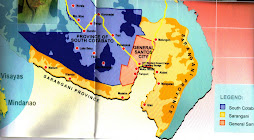

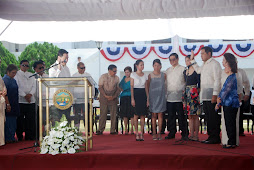
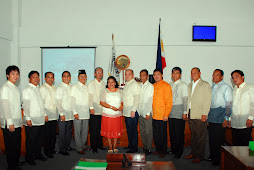


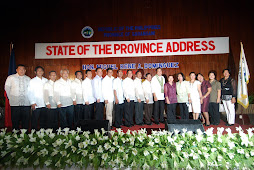
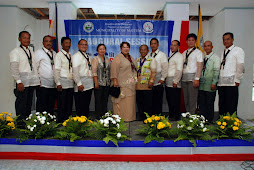







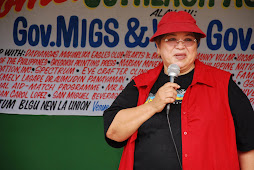














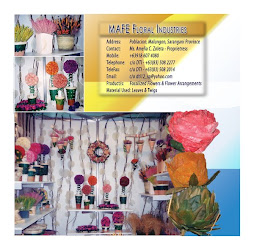




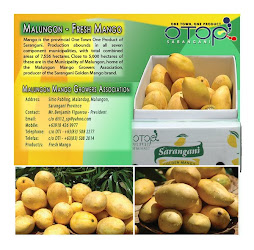













No comments:
Post a Comment